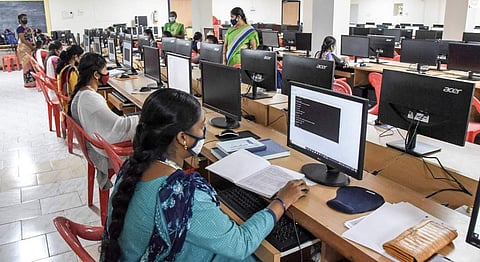How can we bridge the digital divide to benefit Indian students?
The widening digital divide, the gulf between those with access to and utilisation of digital technologies and those without, has emerged as a critical global concern, particularly in developing nations like India.
In India, where a sizable portion of the population lacks reliable internet access and affordable digital devices, bridging this divide is paramount to ensuring equitable educational opportunities and fostering inclusive growth.
To effectively bridge the digital divide and empower Indian students, a multifaceted approach is required. This encompasses:
Expanding Infrastructure: Increasing access to broadband internet connectivity, particularly in rural and underserved areas, is fundamental to bridging the digital divide. This can be achieved through public-private partnerships and government initiatives aimed at expanding internet infrastructure and reducing costs.
Promoting Digital Literacy: Enhancing digital literacy among students and educators is crucial for the effective utilisation of technology in education. This involves providing training on essential computer skills, internet usage, and online learning platforms.
Ensuring Equitable Access to Devices: Providing affordable and reliable digital devices, such as laptops or tablets, to students is essential for bridging the digital divide. This can be achieved through government subsidies, low-cost device initiatives, or device rental programmes.
Developing Digital Content and Resources: Creating engaging and relevant digital content and resources tailored to the needs of Indian students is crucial for enhancing their learning experience. This includes online courses, interactive tutorials, and culturally appropriate educational materials.
Encouraging E-learning and Distance Learning: Promoting the adoption of e-learning and distance learning platforms can expand access to quality education for students in remote areas or those facing challenges in attending traditional schools.
Bridging the Gender Divide: Addressing the gender gap in digital access and usage is crucial for empowering female students. This involves targetted interventions to increase their access to digital devices, training, and online learning opportunities.
Fostering Collaboration and Innovation: Encouraging collaboration among stakeholders, including government agencies, educational institutions, NGOs, and technology companies, can foster innovation and develop effective strategies to bridge the digital divide.
Measuring and Monitoring Progress: Regularly measuring and monitoring progress in bridging the digital divide is essential for identifying gaps and adapting strategies accordingly. This involves collecting data on internet access, device ownership, and digital literacy levels.
Bridging the digital divide is not merely about providing access to technology; it is about empowering individuals to fully participate in the digital world. By addressing the challenges and implementing effective strategies, India can ensure that its future generations are equipped with the digital skills and knowledge necessary to flourish in the 21st century.


